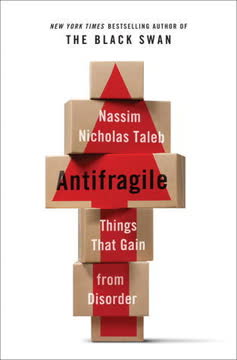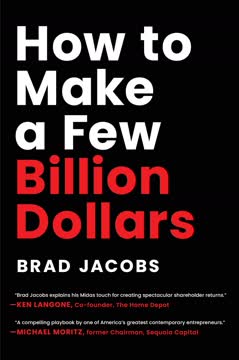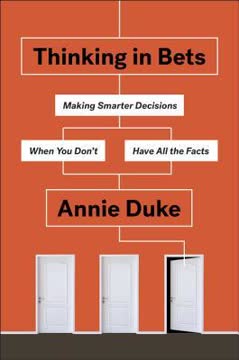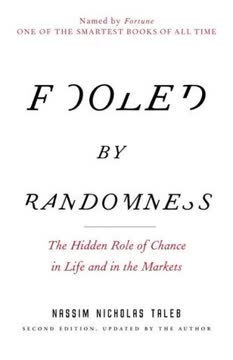가지 주요 요점
1. 지도가 영토가 아니다: 모델의 한계를 인식하라
현실은 궁극적인 업데이트이다.
모델은 현실을 단순화한다. 지도와 모델은 세상을 이해하는 데 필수적인 도구이지만, 본질적으로 결함이 있는 표현이다. 이들은 정보를 관리하기 쉽게 만들기 위해 복잡성을 줄이며, 종종 중요한 세부 사항을 생략한다.
한계와 편향. 모든 모델은 창작자의 가치, 기준, 한계를 반영한다. 제인 제이콥스가 도시 계획 모델을 비판한 것처럼, 지도는 영토에 영향을 미칠 수 있다. 모델을 효과적으로 사용하려면:
- 그 목적과 맥락을 이해하고
- 그 한계와 잠재적 편향을 인식하며
- 현실 세계의 피드백을 기반으로 정기적으로 업데이트하고
- 더 이상 유용하지 않은 모델을 버리거나 수정할 준비가 되어 있어야 한다.
실용적 적용. 어떤 모델이나 프레임워크를 사용할 때:
- 그 가정과 특정 상황에 대한 적용 가능성을 질문하고
- 모델이 현실을 과도하게 단순화하거나 왜곡할 수 있는 영역을 찾아내며
- 더 완전한 이해를 위해 여러 관점과 보완적인 모델을 찾고
- 새로운 정보가 제공될 때마다 견해를 업데이트할 준비가 되어 있어야 한다.
2. 능력의 원: 당신이 알고 있는 것과 모르는 것을 알아라
당신은 사실 알고 있다고 생각할 뿐이다.
자기 인식이 중요하다. 능력의 원을 이해하는 것은 깊은 지식과 경험이 있는 영역과 전문 지식이 부족한 영역을 인식하는 것을 의미한다. 이 인식은 더 나은 결정을 내리고 비용이 많이 드는 실수를 피하는 데 도움이 된다.
능력 구축 및 유지. 능력의 원을 개발하려면:
- 호기심과 학습에 대한 열망
- 자신의 성과와 결정을 지속적으로 모니터링
- 다른 사람들로부터 솔직한 피드백을 구하고
- 실수를 인정하고 배우려는 의지가 필요하다.
능력의 원 밖에서 운영하기. 전문 지식을 벗어난 상황에 직면했을 때:
- 새로운 도메인의 기본을 배우고
- 전문가와 상담하고 신중한 질문을 하며
- 제한된 이해를 보완하기 위해 일반적인 정신 모델을 적용하고
- 과신에 주의하고 자신의 지식의 한계를 인식해야 한다.
3. 제1원칙 사고: 복잡한 문제를 근본적으로 분해하라
당신이 이해하는 것을 알면, 다른 사람들보다 우위를 점할 수 있는 곳을 알게 된다.
가정에 도전하기. 제1원칙 사고는 복잡한 문제를 가장 기본적인 요소로 분해하는 것을 포함한다. 이 접근 방식은 가정을 질문하고 근본적인 진리에서 솔루션을 구축할 수 있게 한다.
제1원칙을 확립하는 기술:
- 소크라테스식 질문: 체계적으로 사고와 가정을 도전
- 다섯 번의 왜: 문제의 근본 원인을 깊이 파고들기 위해 반복적으로 "왜"를 묻기
실용적 적용:
- 혁신: 일론 머스크의 전기차와 로켓에 대한 접근 방식
- 문제 해결: 증상을 치료하는 대신 핵심 문제 식별
- 의사 결정: 기존 지혜가 아닌 근본적인 진리에 기반한 선택
제1원칙에서 시작하면 점진적 사고의 함정을 피하고 창의적인 솔루션을 위한 새로운 가능성을 열 수 있다.
4. 사고 실험: 상상을 통해 가능성을 탐구하라
사고 실험은 사물의 본질을 조사하기 위해 사용되는 상상의 장치로 정의될 수 있다.
정신적 시뮬레이션의 힘. 사고 실험은 현실에서 불가능하거나 위험하거나 비실용적인 시나리오와 아이디어를 탐구할 수 있게 한다. 이들은 통찰을 얻고, 가정을 도전하며, 새로운 가설을 생성하는 데 도움을 준다.
사고 실험의 주요 응용:
- 물리적으로 불가능한 것 상상하기 (예: 아인슈타인의 엘리베이터)
- 역사를 재구상하기 (예: 반사실적 사고)
- 직관적이지 않은 것 직관하기 (예: 롤스의 "무지의 베일")
효과적인 사고 실험 수행:
- 질문이나 문제를 명확히 정의하고
- 관련 배경 지식을 확립하며
- 그럴듯한 시나리오를 구성하고
- 결과를 분석하고 결론을 도출하며
- 초기 가설과 결과를 비교하고 이에 따라 조정
사고 실험은 우리의 이해를 확장하고 창의적인 솔루션을 생성하는 강력한 도구이지만, 가치 있는 통찰을 얻기 위해서는 엄격하고 비판적인 사고와 함께 사용해야 한다.
5. 2차 사고: 결과의 결과를 고려하라
이러한 모델을 위험하게 만드는 것은 분석 목적으로 고정된 것으로 가정된 제약이 경험적 설정에서 고정된 것으로 신뢰된다는 것이다.
즉각적인 효과를 넘어서 보기. 2차 사고는 우리의 행동의 즉각적인 결과뿐만 아니라 그 후속 효과도 고려하는 것을 포함한다. 이 접근 방식은 의도하지 않은 부정적인 결과를 피하고 더 견고한 결정을 내리는 데 도움을 준다.
2차 사고의 주요 측면:
- 복잡한 시스템에서의 상호 연결 인식
- 잠재적인 파급 효과 예상
- 단기 이익과 장기 결과의 균형 맞추기
실용적 적용:
- 정책 결정: 새로운 법률이나 규제의 잠재적인 의도하지 않은 결과 평가
- 비즈니스 전략: 경쟁자가 당신의 행동에 어떻게 반응할지 고려
- 개인 의사 결정: 생활 방식 선택의 장기적인 영향을 평가
2차 사고를 연습하려면 항상 "그리고 나서 무엇?"을 물어보라. 이 간단한 질문은 숨겨진 위험과 기회를 드러낼 수 있다.
6. 확률적 사고: 더 나은 의사 결정을 위해 가능성을 추정하라
확률 이론은 미지의 것과 통제할 수 없는 것을 매핑하는 데 사용할 수 있는 유일한 수학적 도구이다.
불확실성 탐색. 확률적 사고는 다양한 결과의 가능성을 추정하여 불확실한 상황에서 더 나은 결정을 내리는 것을 포함한다. 이는 흑백 사고를 넘어 다양한 가능성을 고려하는 데 도움을 준다.
확률적 사고의 주요 개념:
- 베이즈적 사고: 새로운 증거를 기반으로 신념 업데이트
- 팻테일 곡선: 극단적인 사건의 가능성 인식
- 비대칭성: 우리의 확률 추정이 편향될 수 있음을 이해
실용적 적용:
- 위험 평가: 잠재적 위협과 기회 평가
- 의사 결정: 성공 가능성에 기반한 옵션 평가
- 예측: 여러 시나리오를 고려하여 더 정확한 예측
확률적 사고를 개선하려면:
- 다양한 정보 출처를 찾고
- 역사적 데이터와 현재 동향을 모두 고려하며
- 새로운 정보가 제공될 때마다 추정을 정기적으로 업데이트하고
- 판단을 왜곡할 수 있는 인지적 편향을 인식해야 한다.
7. 역전: 여러 각도에서 문제 접근하기
역전은 성공의 장애물을 식별하고 제거하는 데 도움을 주기 때문에 사고를 개선하는 강력한 도구이다.
문제 뒤집기. 역전은 자연스러운 출발점의 반대쪽에서 상황에 접근하는 것을 포함한다. 이 기술은 새로운 통찰을 드러내고 함정을 피하는 데 도움을 줄 수 있다.
역전의 두 가지 주요 접근법:
- 당신이 증명하려는 것이 사실이라고 가정하고, 그 외에 무엇이 사실이어야 하는지 보여주기
- 목표를 직접적으로 겨냥하는 대신, 피하고 싶은 것을 생각하기
실용적 적용:
- 문제 해결: 성공의 장애물 식별 및 제거
- 목표 설정: 피하고 싶은 것을 정의하여 진정으로 원하는 것을 명확히 하기
- 의사 결정: 긍정적인 결과와 잠재적인 함정을 모두 고려
성공적인 역전의 예:
- 존 보글의 인덱스 펀드 창설: 시장을 이기려고 하기보다는 손실을 최소화하는 데 집중
- 소방관들이 산불을 예방하기 위해 통제된 화재를 만드는 것
- 회사들이 프로젝트를 시작하기 전에 잠재적인 실패 원인을 식별하기 위해 "사전 사망"을 수행하는 것
8. 오컴의 면도날: 더 간단한 설명을 선호하라
모든 것이 동일하다면, 즉 두 경쟁 모델이 모두 동일한 설명력을 가지고 있다면, 더 간단한 솔루션이 충분하다.
단순함을 지침으로 삼기. 오컴의 면도날은 더 간단한 설명이 복잡한 것보다 더 진실일 가능성이 높다고 말한다. 이 원칙은 불필요한 복잡성을 피하고 더 효율적인 결정을 내리는 데 도움을 준다.
왜 더 간단한 설명이 더 나은가:
- 잘못될 수 있는 가정과 변수가 적음
- 테스트하고 반증하기 쉬움
- 불확실성에 더 강함
오컴의 면도날 적용:
- 여러 설명에 직면했을 때, 사실에 맞는 가장 간단한 것부터 시작
- 시스템과 프로세스에서 복잡성을 줄이는 방법 찾기
- 지나치게 정교한 이론이나 솔루션에 주의
한계: 일부 현상은 본질적으로 복잡하며 과도하게 단순화할 수 없다. 오컴의 면도날을 지침으로 사용하되, 절대적인 규칙으로 사용하지 말라.
9. 한론의 면도날: 어리석음으로 설명할 수 있는 것을 악의로 돌리지 말라
가장 맞을 가능성이 높은 설명은 의도가 가장 적은 설명이다.
불필요한 편집증 피하기. 한론의 면도날은 어리석음이나 무능으로 충분히 설명할 수 있는 것을 악의로 돌리지 말라고 상기시킨다. 이 원칙은 복잡한 세상에서 불필요한 갈등과 편집증을 피하는 데 도움을 준다.
한론의 면도날 적용의 이점:
- 스트레스와 부정적인 감정 감소
- 관계와 의사소통 개선
- 더 생산적인 문제 해결 접근법 열기
실용적 적용:
- 대인 갈등: 악의를 가정하기 전에 오해를 고려
- 고객 서비스 문제: 개인을 비난하기보다는 시스템 문제 찾기
- 직장 문제: 비난을 할당하기보다는 프로세스 개선에 집중
잠재적인 악의를 인식하는 것이 중요하지만, 무능이나 실수를 가정하는 것으로 시작하면 더 건설적인 결과와 더 나은 문제 해결로 이어지는 경우가 많다.
마지막 업데이트 날짜:
FAQ
What's "The Great Mental Models: General Thinking Concepts, Vol. I" about?
- Purpose and Scope: The book, authored by Shane Parrish, aims to help readers develop a better understanding of how the world works by introducing them to mental models that enhance decision-making and problem-solving.
- Content Focus: It covers a range of topics including decision-making, learning, and the art of living, drawing on ideas from both science and the humanities.
- Project Ambition: This volume is part of a larger project to create a multidisciplinary education resource that is accessible to everyone, with plans for additional volumes covering various disciplines.
Why should I read "The Great Mental Models: General Thinking Concepts, Vol. I"?
- Improved Decision-Making: The book provides tools to help you make better decisions by understanding and applying mental models.
- Multidisciplinary Approach: It encourages thinking across different fields, helping you connect ideas and think in a more integrated way.
- Practical Application: The models discussed are not just theoretical; they are meant to be applied in everyday life to improve understanding and outcomes.
What are the key takeaways of "The Great Mental Models: General Thinking Concepts, Vol. I"?
- Mental Models: Understanding and using mental models can significantly improve your thinking and decision-making processes.
- Latticework of Models: Building a network of interconnected models from various disciplines helps in understanding complex problems.
- Continuous Learning: The book emphasizes the importance of updating your knowledge and models as you gain new information and experiences.
What is a mental model according to Shane Parrish?
- Definition: A mental model is a representation of how something works, simplifying complex realities into understandable concepts.
- Utility: They help in decision-making by allowing you to see problems from multiple perspectives and identify relevant information.
- Application: The book focuses on models with broad utility, which can be applied across different areas of life and disciplines.
How does "The Great Mental Models" suggest using first principles thinking?
- Core Idea: First principles thinking involves breaking down complex problems into their fundamental parts and building up from there.
- Technique: It encourages questioning assumptions and focusing on the basic truths of a situation to innovate or solve problems.
- Example: The book uses examples like the discovery of bacteria causing stomach ulcers to illustrate how challenging assumptions can lead to breakthroughs.
What is the "Circle of Competence" concept in the book?
- Definition: Your circle of competence is the area where you have deep knowledge and understanding, allowing you to make informed decisions.
- Importance: Knowing your circle helps you identify where you have an edge and where you need to seek help or learn more.
- Application: The book advises staying within your circle for decision-making and expanding it through continuous learning and feedback.
How does "The Great Mental Models" explain second-order thinking?
- Concept: Second-order thinking involves considering the long-term consequences of actions, not just the immediate effects.
- Importance: It helps in avoiding unintended consequences by thinking through the ripple effects of decisions.
- Application: The book provides historical examples to show how failing to consider second-order effects can lead to disaster.
What is the significance of Occam's Razor in the book?
- Principle: Occam's Razor suggests that the simplest explanation is often the most likely to be correct.
- Application: It helps in decision-making by encouraging you to avoid unnecessary complexity and focus on the most straightforward solutions.
- Examples: The book uses examples from science and everyday life to illustrate how this principle can lead to more efficient problem-solving.
How does "The Great Mental Models" address probabilistic thinking?
- Definition: Probabilistic thinking involves estimating the likelihood of various outcomes to make better decisions.
- Tools: The book discusses tools like Bayesian thinking and fat-tailed curves to help understand and apply probabilities.
- Application: It emphasizes the importance of considering probabilities in complex, uncertain situations to improve decision accuracy.
What role does inversion play in problem-solving according to the book?
- Concept: Inversion involves approaching a problem from the opposite end, such as thinking about what to avoid rather than what to achieve.
- Utility: It helps in identifying obstacles and simplifying complex problems by considering them from different angles.
- Examples: The book provides examples of how inversion has been used in various fields to achieve innovative solutions.
What are some of the best quotes from "The Great Mental Models" and what do they mean?
- "The quality of your thinking depends on the models that are in your head." This emphasizes the importance of having a diverse set of mental models to improve decision-making.
- "Understanding only becomes useful when we adjust our behavior and actions accordingly." This highlights the need to apply knowledge practically to effect positive change.
- "Avoiding stupidity is easier than seeking brilliance." This suggests that focusing on avoiding mistakes can be a more effective strategy than trying to achieve perfection.
How does "The Great Mental Models" suggest dealing with complexity?
- Simplification: The book advises using mental models to break down complex problems into simpler, more manageable parts.
- Interconnected Models: It encourages building a latticework of models to see problems from multiple perspectives and understand their interconnections.
- Continuous Update: It stresses the importance of continuously updating your models and knowledge as you gain new information and experiences.
리뷰
위대한 사고 모델은 다양한 평가를 받고 있다. 많은 이들이 의사결정과 문제 해결을 위한 사고 모델의 도입을 칭찬하며, 일부는 필독서로 여긴다. 독자들은 간결한 설명과 실제 사례를 높이 평가한다. 그러나 비평가들은 내용이 기본적이고 깊이가 부족하며, 구성이 잘못되었다고 지적한다. 일부는 오디오북 내레이션이 수준 이하라고 느낀다. 비판에도 불구하고 많은 독자들은 사고를 개선하는 접근 방식을 가치 있게 여기며, 시리즈의 다음 권을 기대하고 있다. 전반적으로, 사고 모델을 이해하는 데 좋은 출발점으로 여겨지지만, 개선의 여지가 있다.
Similar Books
















